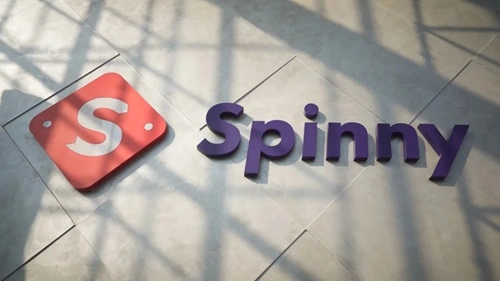Spinny, an Indian full-stack used car retail platform, has emerged as a trusted name in the pre-owned automobile market. Founded in 2015 by Niraj Singh, Mohit Gupta, and Ramanshu Mahaur, Spinny leverages technology to provide a seamless and transparent experience for both buyers and sellers of used cars. By addressing pain points like trust, quality assurance, and convenience, Spinny has become a key player in the fast-growing used car market in India.
This article explores Spinny’s business model, revenue streams, and strategies that have contributed to its success in the highly competitive pre-owned car industry.
Overview of Spinny’s Business Model

Spinny operates on a B2C (Business-to-Consumer) and C2B (Consumer-to-Business) business model, offering a comprehensive platform for buying and selling used cars. Unlike traditional brokers and marketplaces, Spinny takes end-to-end ownership of the transaction, ensuring trust and transparency.
Key Features of Spinny’s Business Model:
- Full-Stack Model:
- Spinny controls the entire value chain, from inspection and certification to pricing, refurbishment, and final sale.
- Customer-Centric Approach:
- The platform focuses on delivering a hassle-free experience, offering features like home test drives, instant pricing, and no middlemen.
- Quality Assurance:
- Every car sold by Spinny undergoes a rigorous 200-point quality check and comes with a 1-year warranty and a 5-day money-back guarantee.
- Technology-Driven Operations:
- Spinny uses AI and data analytics to assess car conditions, determine pricing, and optimize inventory management.
How Does Spinny Earn Money?
Spinny generates revenue through multiple streams by acting as both a buyer and seller of pre-owned cars, while also offering additional services to enhance the customer experience. Here’s how Spinny earns money:
a. Profit Margins on Car Sales
- Primary Revenue Stream:
- Spinny purchases used cars from sellers, refurbishes them, and sells them to buyers at a markup.
- The profit margin is derived from the difference between the car’s purchase price and its final sale price after refurbishment.
- Dynamic Pricing:
- Spinny uses data-driven algorithms to ensure competitive pricing for buyers while maximizing margins.
b. C2B Car Selling Services
- Spinny earns revenue by facilitating the direct sale of cars from consumers to the platform. Sellers benefit from:
- Instant Offers: Spinny provides instant price quotes for cars based on market data.
- Free Inspection: A detailed car inspection determines the final offer price.
- The platform profits when these cars are later sold to end customers at a markup.
c. Refurbishment Services
- Spinny invests in refurbishing cars to ensure they meet quality standards. It recovers refurbishment costs and earns additional profit by selling these certified pre-owned cars at a premium.
d. Convenience and Value-Added Services
- Spinny offers value-added services, such as:
- RC (Registration Certificate) Transfer: Handling ownership transfer processes on behalf of the buyer or seller.
- Insurance: Partnering with insurance companies to provide car insurance at the time of purchase.
- Extended Warranties: Offering optional extended warranties for additional peace of mind.
- These services are charged to customers, creating an additional revenue stream.
e. Financing Solutions
- Spinny collaborates with financial institutions to offer car loans and EMI options for buyers. Revenue is generated through:
- Loan Processing Fees: Charged to buyers who opt for financing.
- Commissions from Financial Partners: Spinny earns a percentage of the loan amount disbursed.
f. Subscription Plans
- Spinny has begun exploring subscription-based models, allowing customers to lease cars instead of purchasing them outright. Revenue is earned through monthly subscription fees.
g. Advertising Partnerships
- Spinny collaborates with car accessory brands, service providers, and insurance companies for in-app or website advertising. These partnerships generate advertising revenue.
h. Fleet Sales
- The platform also sells refurbished cars in bulk to fleet operators, ride-hailing companies, and car rental businesses. Bulk sales ensure quick inventory turnover and additional revenue.
Why Spinny’s Model Works
Spinny’s success is built on its ability to address the challenges traditionally associated with buying and selling used cars, such as trust, quality, and convenience. Here’s why its model works:
a. Full Ownership of the Value Chain
- By owning the entire process, Spinny eliminates middlemen, ensuring consistent quality and pricing transparency for customers.
b. Customer Trust
- With quality checks, warranties, and money-back guarantees, Spinny has built trust among customers, a crucial factor in the used car market.
c. Technology Integration
- Spinny leverages AI and machine learning to optimize pricing, predict demand, and ensure smooth operations, resulting in better margins and customer satisfaction.
d. Convenience
- Services like home test drives, doorstep delivery, and instant price quotes make the car buying and selling process hassle-free.
e. Market Growth
- India’s used car market is projected to grow at a CAGR of 11% between 2023 and 2028. Spinny’s focus on transparency and quality positions it to capture a significant share of this growing market.
Financial Performance
Spinny has seen rapid growth, fueled by rising consumer trust in online platforms for buying and selling used cars.
Revenue Growth
- Spinny reported revenue exceeding ₹1,700 crores in FY 2023, driven by strong transaction volumes and a growing customer base.
Funding and Valuation
- Spinny has raised over $530 million from investors like Tiger Global, Accel, and General Catalyst, achieving unicorn status in 2021 with a valuation exceeding $1.8 billion.
Market Share
- As one of the leading players in India’s organized used car market, Spinny competes with platforms like Cars24, CarDekho, and OLX Autos.
Challenges and Opportunities
Challenges
- High Operational Costs:
- Managing inventory, refurbishments, and logistics involves significant costs.
- Intense Competition:
- Competing with established players and traditional offline dealerships is a challenge.
- Customer Retention:
- Building loyalty in a market where purchases are infrequent can be difficult.
Opportunities
- Tier 2 and Tier 3 Expansion:
- Expanding into smaller cities offers untapped potential, as demand for used cars grows in these regions.
- Electric Vehicles (EVs):
- Focusing on EVs and hybrid vehicles can capture emerging trends in the automobile market.
- Subscription Services:
- Scaling its car subscription offerings could attract younger, tech-savvy consumers.
- AI-Driven Insights:
- Using advanced analytics to better understand customer behavior and optimize inventory can enhance margins.
Future Prospects
Spinny is poised for sustained growth as it continues to innovate and expand its operations. Key focus areas include:
- Strengthening its presence in Tier 2 and Tier 3 cities.
- Increasing its market share in the EV segment by building an inventory of certified pre-owned electric cars.
- Scaling its subscription-based models to attract a broader audience.
- Investing in technology to enhance customer experience and operational efficiency.
Conclusion
Spinny’s business model, centered around transparency, quality assurance, and customer convenience, has disrupted India’s used car market. By leveraging technology and controlling the entire value chain, Spinny ensures a seamless experience for buyers and sellers alike. With a strong focus on innovation, customer trust, and market expansion, Spinny is well-positioned to maintain its leadership in the growing pre-owned car industry while tapping into emerging opportunities in EVs, financing, and subscription services. As the demand for used cars continues to rise, Spinny’s comprehensive and customer-focused approach ensures it remains a preferred choice for consumers across the country.

